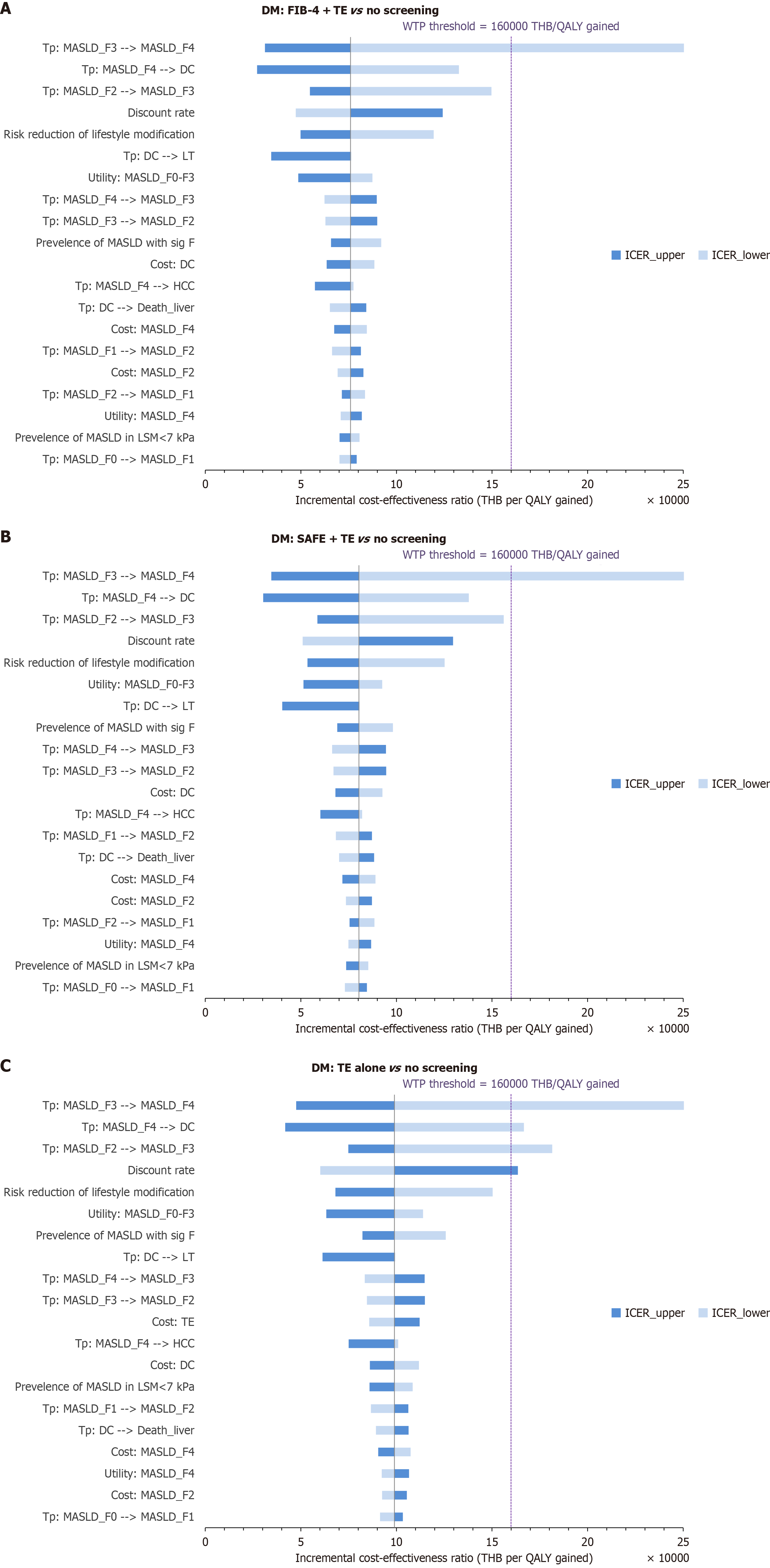Copyright
©The Author(s) 2025.
World J Gastroenterol. Aug 28, 2025; 31(32): 110333
Published online Aug 28, 2025. doi: 10.3748/wjg.v31.i32.110333
Published online Aug 28, 2025. doi: 10.3748/wjg.v31.i32.110333
Figure 2 Tornado diagrams.
A: Fibrosis-4 + transient elastography (TE) compared to no screening; B: Steatosis-associated fibrosis estimator + TE compared to no screening; C: TE alone compared to no screening. The vertical axis ranks model parameters by their influence on the incremental cost-effectiveness ratio (ICER). Horizontal bars display the ICER span when each parameter is varied across its 95% confidence interval; bars extending left of the base-case value indicate greater cost-effectiveness, whereas bars extending right denote reduced cost-effectiveness. The dashed purple line represents the Thai willingness-to-pay threshold of 160000 Thai baht (THB)/quality-adjusted life-year (QALY) gained. DC: Decompensated cirrhosis; DM: Diabetes mellitus; F: Fibrosis stage; FIB-4: Fibrosis-4 index; LSM: Liver stiffness measurement; MASLD: Metabolic dysfunction-associated steatotic liver disease; SAFE: Steatosis-associated fibrosis estimator score; Tp: Transitional probability.
- Citation: Kositamongkol C, Tantiyavarong P, Ratanatawan A, Sripongpun P, Mahawithitwong P, Kositamongkol P, Saokaew S, Phisalprapa P. Cost-effectiveness of transient elastography for liver fibrosis screening in Thai patients with diabetes mellitus. World J Gastroenterol 2025; 31(32): 110333
- URL: https://www.wjgnet.com/1007-9327/full/v31/i32/110333.htm
- DOI: https://dx.doi.org/10.3748/wjg.v31.i32.110333









